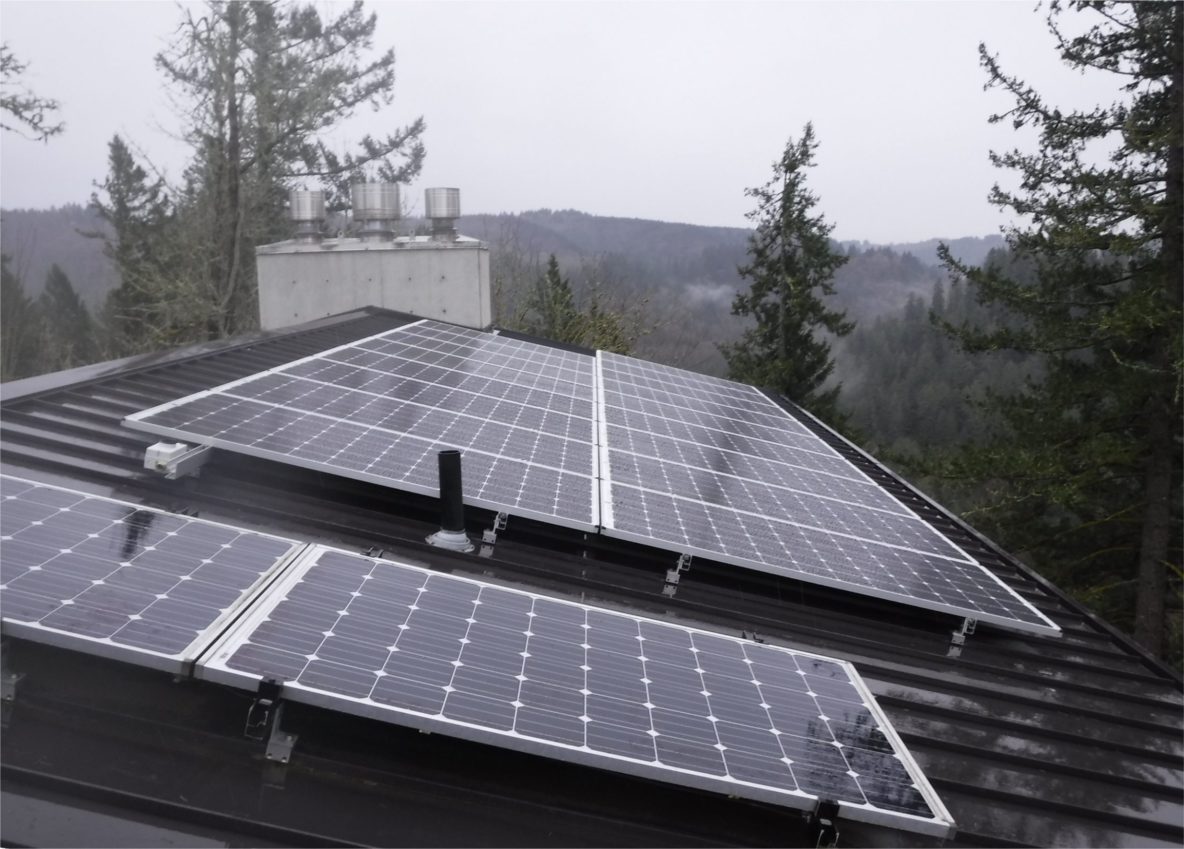It’s a fair question, and one that we hear frequently from homeowners on the wetter side of the Cascades who are relatively new to the technology. While you’ve probably heard dramatic stories of solar electricity prices beating out coal and natural gas in the sunny expanses of the Mojave, it can be hard to imagine any records being broken in one of the darkest, rainiest parts of the lower forty-eight. Can solar on your home actually yield a significant economic return in the shady groves of the Pacific Northwest? Or is it still an avant-garde technology in these parts, meant primarily for passionate environmental do-gooders? Let’s take a look at the numbers.
It’s true that western Oregon is cloudy. In a typical year, Portland receives only 144 days of sun. What’s more, with latitudes exceeding 45° N, our sun takes a fairly tame arc through the southern skies. If you want to get specific, I can tell you that a horizontal square meter of ground in Portland receives an average of 1288 kWh of energy from the sun every year. What does that number tell you? To start, it helps us compare ourselves to Germany, which happens to be the country with the greatest per capita installed capacity of photovoltaic systems in the world. Even if you aren’t correcting for population, Germany is still solidly in the top four most solarized nations. Germany broke a record in 2017 when, for several particularly sunny hours, nearly a third of the electricity being consumed in the entire country was being produced from solar systems. So how do we stack up against this photovoltaic behemoth? Even Munich, the sunniest large city in the country, receives a bit under 1200 kWh of energy from the sun annually. That’s 7% less than what we get in cloudy Portland, Oregon!
Far from avant-garde, solar is popular here. In fact, we have more installed photovoltaic capacity than Utah and Hawaii combined–two sunny states with robust solar industries. According to the Energy Trust of Oregon, there are 11,000 households in the state with solar, and an average of 5 additional systems come online every day. We’re not just along for the ride, though, we’re taking the lead. Energy Trust provides a handsome incentive that can be tacked onto the 30% federal tax credit, actively pushing our state toward a cleaner, prosperous, and more sustainable future. Cities like Portland, Beaverton, and Milwaukie are also charging ahead, with periodic ‘solarize’ campaigns that further increase awareness and adoption.
So what can you do with the 1288 kWh of solar energy that falls on each (horizontal) square meter of your home every year? It depends on your energy consumption habits, the physical qualities of your roof, and how much shading your receive, but it is not uncommon for our customers to be able to offset the majority–or even the entirety–of their electrical usage. However, while ‘net-zero electricity’ is an attractive badge to wear, it is by no means necessary for receiving significant financial benefit from your solar investment. Over the period of a typical solar panel warranty–25 years, though panels commonly live to kick out juice for over 35 years–systems small and large can generally expect to produce upwards of a 200% return on investment. Not bad for a region that only gets 144 days of sun every year. And those 221 remaining days of rain and clouds? They’re giving your panels a free rinse, saving you from the only routine maintenance we suggest to keep your system running at its highest capacity.
So, now that you know the numbers, you tell us: does solar work in Oregon?

